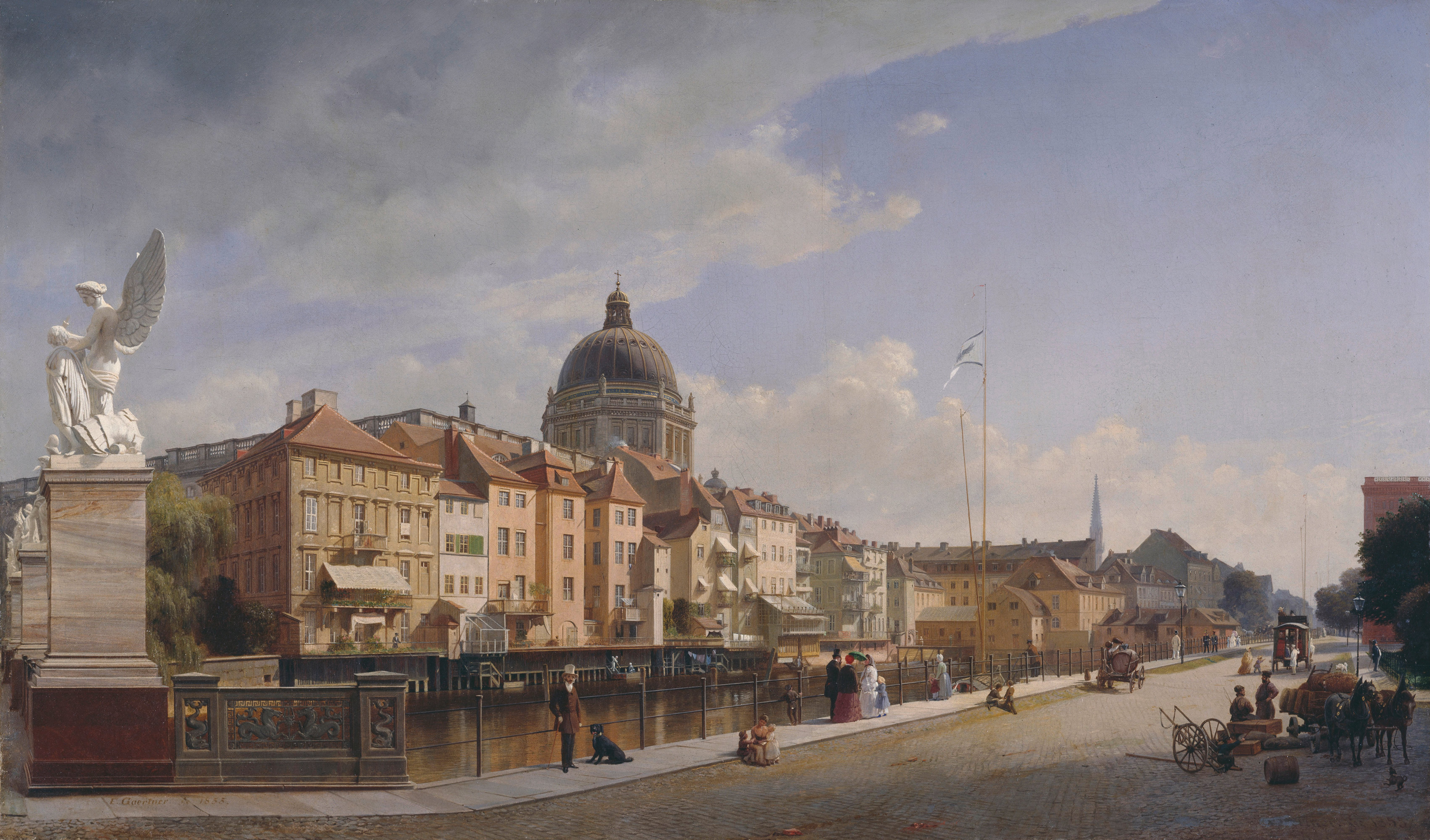Nowadays, when people walk along Schloßplatz, they'll certainly notice the empty esplanade between the Dom and the baroque New Stable, between the Lustgarten and the former seat of the Staatsrat, the executive organ of the DDR government. An empty spot in the very centre of the Spreeinsel, and therefore in the very heart of the city. Until recent years, the place was dominated by the so-called Palast of the Republic dating from GDR times. Long before, another structure was built in the same spot, first a small castle. The building would later turn into a ducal residence and finally, into the palace until 1950 stood on the Schloßplatz. Today, in conmemoration of 950 years of the House of Hohenzollern, I've brought back to life the former seat of the Prussian government, this iconic residence that was lost in the 20th century and that is going to be at least partly rebuilt.
{{KMZ file for download will be avaliable soon}}
Not unlike the similarly fated Königsberg Castle, the Berliner Schloss originated from a defensive structure that, in this case, guarded what is now the Rathausbrücke. Around 1443, this simple fortification was converted into a castle by elector Frederick II of Brandenburg. A small chapel, the Erasmuskapelle, was added two decades later, and in the following century, the fort was made a permanent Hohenzollern residence. Around the same time, the Renaissance transverse wing (that contained the Alabastersaal), Duchess Elisabeth's House and the court pharmacy (the Schlossapotheke) were built.
 Spree façade in 1880, note from left to right, the Duchess' House, the Kurfürstengalerie and the Schlossapotheke
Spree façade in 1880, note from left to right, the Duchess' House, the Kurfürstengalerie and the Schlossapotheke Frederick William I, known as the Great Elector, renovated the palace after the devastation caused by the Thirty Years' War. Under his rule, the Kurfürstengalierie (that connected the Duchess' House and the Apotheke) and the Braunschweig Hall were built. A memorial to honour the Elector was placed on the nearby Lange Brücke in 1698.
 View of the monument to Friedrich Wilhelm I of Brandenburg and the Spree-façade, towards north. Dom by 2nd Clemens)
View of the monument to Friedrich Wilhelm I of Brandenburg and the Spree-façade, towards north. Dom by 2nd Clemens)
The Stadtschloss saw many changes in the 1700s, this mainly because of the appointment of Andreas Schlüter (who also designed some parts of the nearby Zeughaus) as Chief Architect a year earlier. Under Schlüter, the western, southern und northern wings, that until that time were little more than simple corridors connecting the structure at the Spree to the transverse wing and the Münzturm, were converted into a splendid Baroque residence. After Schlüter was dismissed in 1706, Architect Johann Eosander von Göthe finished the southern and western wings, adding Portal II to the former, and the great entrance, Portal III to the latter. Eosander's project also included the demolition of the transverse wing and the construction of a 100 m. tower, although neither of those ever took place. Courtyard I was finished around the same time.
Although there were many modifications regarding the interior, few changes were made to the external walls. One of these were the construction of the dome by Friedrich August Stüler in 1845, following plans of Karl Friedrich Schinkel, and the addition of two horse sculptures (the Rossebändiger by Peter Clodt von Jürgensburg), given by Nicholas I of Russia, in 1858. Minor modifications were made to the walls of the transverse wing that faced Courtyard II. The pharmacy wing was also modified.
A major change to the arounds of the palace was the construction of the Kaiser Wilhelm National Memorial across the street from Portal III between 1888-89, on the place of a residential complex known as the Schlossfreiheit, that included parts dating back from the 17th century. The focal piece of the monument was an equestrian statue of Emperor William I above a pedestal with four lions, a classical colonnade around it.
In the midst of the German Revolution, Communist leader Karl Liebknecht proclaimed a socialist republic, that proved to be short-lived, from Portal IV in November 9, 1918. As the new government core was now at the Wilhelmstraße, the building didn't played a big role in the Weimar Republic politics, but did housed one of the largest art collections in the city.
 Stadtschloss in the current Berlin cityscape (Fernsehturm by Frank, Staatsratsgebäude by AcidGraz)
Stadtschloss in the current Berlin cityscape (Fernsehturm by Frank, Staatsratsgebäude by AcidGraz)
And...well, the rest is known history. The Stadtschloss got bombed two times, the second one by incendiary bombs. Still the building was fit enough to be rebuilt, as you can see here, the damage was not as severe as in other buildings in the city (the Ordenspalais, for example) and could have been repaired. The SED, however, decided to blow up the still impressive palace along with the Nationaldenkmal in 1950, under the typical 'Prussian imperialism' pretext that was used with the Potsdamer Stadtschloss and the Königsberg Castle.
The square stood empty until 1973, when construction of the Palast der Republik started. The asbestos-full structure was dismantled in stages, finishing in 2008. Part of the Stadtschloss is being rebuilt, but well...that's another story. Until then....Enjoy!




